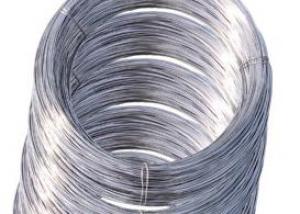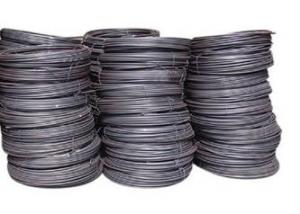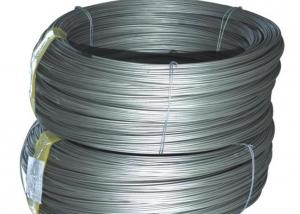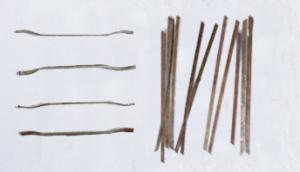Steel Wire Rod
- Loading Port:
- China Main Port
- Payment Terms:
- TT or LC
- Min Order Qty:
- 1 Ton m.t.
- Supply Capability:
- 2000 Tons Per Month m.t./month
OKorder Service Pledge
OKorder Financial Service
You Might Also Like
Stainless Steel Wire
1.Grade: SS 200,300,400 series
2.Dia: 0.1mm-100mm
3.Length:500m-2000m/Reel
4.Surface: Bright
5.Certificate: Fortune 500, SGS, ISO 9001:2008
6.Test: Salt Spray over200 hours
7.MOQ:500kg
8.Delivery: Within 20 days
9.Packing: Reel, wooden box or according to your requirement
10.Payment terms: China Main Port or CIF ANY PORT
11. Application: Tie wire, pins, lashing, forming wire, filters, gaskets, elevators, safety wire, shaped and flat wire, conveyors, jewelry, springs, brush welding, electrical, wire line, craft and many more applications.
|
Main Grades |
C % |
Si % |
S % |
P % |
Mn % |
Cr % |
Ni % |
Mo % |
Cu % |
|
S30400 |
<0.08 |
<0.75 |
<0.015 |
<0.045 |
<2 |
18.05-19 |
8.01--8.25 |
<0.6 | |
|
304H |
0.04-0.1 |
<0.75 |
<0.015 |
<0.045 |
<2 |
18.05-19 |
8.01--8.25 |
<0.5 | |
|
304Hc1 |
0.03-0.05 |
<0.75 |
<0.015 |
<0.045 |
<2 |
18.05-19 |
8.01-8.25 |
1.2-1.6 | |
|
304Hc |
0.03-0.05 |
<0.75 |
<0.015 |
<0.045 |
<2 |
18.05-19 |
8.01--8.25 |
2-3 | |
|
304Hc3 |
0.03-0.05 |
<0.75 |
<0.015 |
<0.045 |
<2 |
18.05-19 |
8.01--8.25 |
3-3.5 | |
|
304ES |
<0.08 |
<0.75 |
<0.015 |
<0.045 |
2-3 |
16.05-17 |
6.01-6.3 |
1.5-3 | |
|
304M2 |
0.05-0.08 |
<0.75 |
<0.015 |
<0.045 |
2-3 |
18-18.5 |
7-8.1 |
<0.6 | |
|
304M3 |
0.05-0.08 |
<0.75 |
<0.015 |
<0.045 |
2-3 |
18-18.5 |
8.01-8.25 |
<0.6 | |
|
304L |
<0.035 |
<0.75 |
<0.015 |
<0.045 |
<2 |
18.05-19 |
8.01--8.25 |
<0.6 | |
|
321 |
0.04-0.08 |
<0.75 |
<0.015 |
<0.045 |
<2 |
17-18 |
8.01--8.25 |
||
|
316L |
<0.035 |
<0.75 |
<0.015 |
<0.045 |
<2 |
16.05-17 |
10.01--10.35 |
2.01-2.2 |
<1 |
|
316 |
0.04-0.08 |
<0.75 |
<0.015 |
<0.045 |
<2 |
16.05-17 |
10.01--10.35 |
2.01-2.2 |
<1 |
|
316LCu |
<0.035 |
<0.75 |
<0.05 |
<0.045 |
<2 |
16-17 |
10-10.5 |
2-2.25 |
|
|
ER316L |
<0.04 |
0.65 |
<0.03 |
<0.04 |
1.0-2.5 |
18-20 |
11.1-12 |
||
|
201CU |
<0.08 |
<0.75 |
<0.015 |
<0.045 |
8-9.5 |
13.05-14 |
4.01-4.25 |
2-3 | |
|
D667 |
<0.08 |
<0.75 |
<0.015 |
<0.045 |
13-14 |
13-14 |
0.7-1.5 |
1.5-3 | |
|
D665B |
<0.08 |
<0.75 |
<0.015 |
<0.045 |
14-16 |
10.05-11 |
<1.2 |
0.5--1.5 | |
|
202B |
0.1-0.15 |
<0.75 |
<0.015 |
<0.045 |
9-10 |
17.05-18 |
4.5-5 |
||
|
D669 |
0.08-1.0 |
<0.75 |
<0.015 |
<0.045 |
14.5-16 |
11-12 |
<1.2 |
0.5-1.5 | |
|
200CU |
<0.08 |
<0.75 |
<0.015 |
<0.045 |
11-12 |
13-14 |
1-2 |
1.5-2.5 |
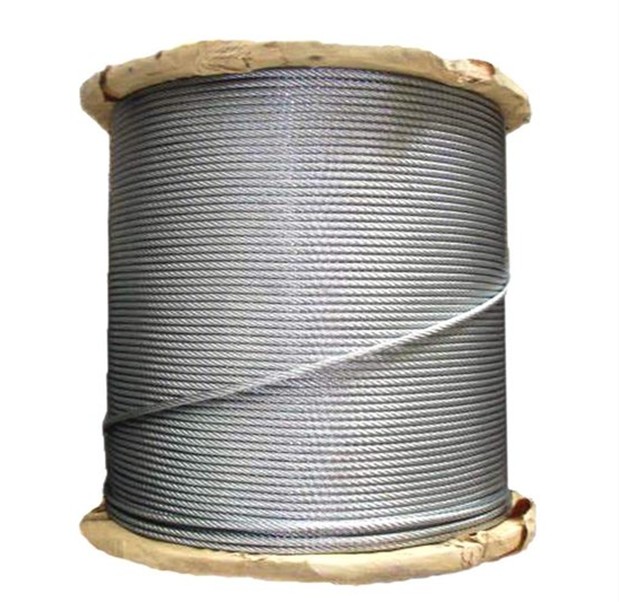

- Q:Is stainless steel wire flexible or rigid?
- Stainless steel wire exhibits a certain level of flexibility, albeit generally being more rigid in comparison to other wire types. Although it can undergo bending and shaping, it lacks the same degree of flexibility as nylon or copper wire. The strength and durability of stainless steel wire are well-known attributes that render it less susceptible to bending or distorting when subjected to pressure. However, it is crucial to acknowledge that the flexibility of stainless steel wire may vary depending on factors such as diameter and tempering process. In essence, stainless steel wire strikes a harmonious balance between flexibility and rigidity, making it a suitable choice for various applications across industries like construction, automotive, and medical.
- Q:When polyurethane insulation, why should use stainless steel wire or steel band fixed?
- When the pipe is cold, the pipe protection layer may have condensed water, and the wire is easy to rust.
- Q:What are the different types of stainless steel wire baskets?
- There are various types of stainless steel wire baskets available, including mesh baskets, perforated baskets, solid-sided baskets, stacking baskets, and custom-designed baskets.
- Q:Set the rabbit with stainless steel, hard silk or soft silk?
- It is soft silk, the soft steel wire is the soft silk that you call.
- Q:Can stainless steel wire be used for automotive exhaust systems?
- Yes, stainless steel wire can be used for automotive exhaust systems. Stainless steel is a popular material choice for exhaust systems due to its high corrosion resistance and heat resistance properties. It can withstand the extreme temperatures and harsh conditions that exhaust systems are exposed to, including heat, moisture, and chemicals. Stainless steel wire can be used for various components of an exhaust system, including hangers, brackets, and supports, as it provides strength and durability. Additionally, stainless steel wire can be easily formed and fabricated to meet the specific design requirements of an exhaust system. Overall, stainless steel wire is a reliable and suitable material for automotive exhaust systems.
- Q:What are the different types of stainless steel wire rope fittings?
- For various applications, there is a wide range of stainless steel wire rope fittings to choose from. Some of the fittings commonly used include: 1. Thimbles: Thimbles serve the purpose of protecting the wire rope from wear and tear, as well as creating a loop or eye in the wire rope. They come in different sizes and shapes, including standard, heavy-duty, and oval thimbles. 2. Wire rope clips: Known also as cable clamps or U-bolts, wire rope clips are utilized to secure the loose end of a wire rope to the standing part. They consist of a U-shaped bolt, a saddle, and two nuts. Wire rope clips are available in various sizes to match the diameter of the wire rope being used. 3. Turnbuckles: Adjusting the tension in a wire rope is achieved through the use of turnbuckles. They consist of a body with threaded ends, one right-hand and one left-hand, along with an eye or hook on each end. By rotating the body, the length of the turnbuckle can be adjusted, thereby changing the tension in the wire rope. 4. Swage fittings: Swage fittings are employed to terminate wire rope by crimping or swaging the fitting onto the wire rope. They are available in different forms, such as swage studs, swage forks, and swage eyes. Swage fittings ensure a secure and permanent termination for wire ropes. 5. Shackles: To connect two wire ropes or to connect a wire rope to an anchor point, shackles are used. Bow shackles, D shackles, and screw pin shackles are among the different types available. Shackles find common use in lifting and rigging applications. 6. Hooks: Hooks are utilized to connect a wire rope to a load or an anchor point. They come in various forms, including eye hooks, clevis hooks, and swivel hooks. Hooks find wide-ranging applications, from lifting heavy loads to securing objects. These examples represent just a fraction of the stainless steel wire rope fittings available. The selection of a fitting should be based on the specific application, load requirements, and environmental conditions. Choosing the appropriate fitting is vital to ensure the safety and reliability of the wire rope system.
- Q:What are the common sizes of stainless steel wire?
- The common sizes of stainless steel wire vary depending on the application and industry requirements. Stainless steel wire is available in a wide range of diameters, typically ranging from 0.001 inches (0.0254 mm) to 0.375 inches (9.525 mm) or even thicker for certain specialized applications. For general-purpose applications, common stainless steel wire sizes range from 0.020 inches (0.508 mm) to 0.080 inches (2.032 mm) in diameter. These sizes are often used in industries such as construction, automotive, and manufacturing for various purposes like wire mesh, springs, fasteners, and electrical components. In some specialized applications, such as medical devices or intricate electronic components, stainless steel wire with diameters as small as 0.001 inches (0.0254 mm) may be required. Conversely, heavy-duty industrial applications may require stainless steel wire with diameters exceeding 0.375 inches (9.525 mm). It is important to note that stainless steel wire is available in different grades, each with its own unique characteristics and suitable applications. The most common grades include 304, 316, and 316L stainless steel. These grades have varying corrosion resistance, tensile strength, and temperature resistance, which may influence the choice of wire diameter for specific applications. Ultimately, the choice of stainless steel wire size depends on the intended use and specific requirements of the project or application. Consulting with a trusted supplier or industry expert can help determine the appropriate wire size for optimal performance and durability.
- Q:Can stainless steel wire be used for automotive brake cables?
- Indeed, automotive brake cables can utilize stainless steel wire. Renowned for its corrosion resistance, durability, and strength, stainless steel proves to be an appropriate substance for brake cables, which necessitate enduring substantial pressures and ensuring dependable braking capabilities. Moreover, when subjected to tension, stainless steel wire exhibits diminished likelihood of stretching or fracturing in comparison to alternative materials, thereby securing the brake system's longevity and safety.
- Q:Is stainless steel wire resistant to chemical exposure?
- Yes, stainless steel wire is highly resistant to chemical exposure. Stainless steel is known for its excellent corrosion resistance, making it suitable for various applications where it may come into contact with different chemicals. It has a protective oxide layer that forms on its surface, which helps prevent the wire from reacting with chemicals and corroding. This resistance to chemical exposure makes stainless steel wire a preferred choice in industries such as chemical processing, pharmaceuticals, food and beverage, and many others. However, it is important to note that the specific grade and composition of stainless steel can impact its resistance to certain chemicals, so it is crucial to select the appropriate stainless steel grade based on the type of chemical exposure it will encounter.
- Q:What are the different types of stainless steel wire springs used in the electronics industry?
- There are several types of stainless steel wire springs commonly used in the electronics industry. Some of the most common types include compression springs, extension springs, torsion springs, and constant force springs. These springs are used for various purposes such as providing tension, absorbing shocks, and ensuring proper electrical contact in electronic devices.
1. Manufacturer Overview |
|
|---|---|
| Location | Hebei,China |
| Year Established | 2009 |
| Annual Output Value | Above US$1 million |
| Main Markets | Asia, Middle East,America |
| Company Certifications | CE, CCC, ISO90001 |
2. Manufacturer Certificates |
|
|---|---|
| a) Certification Name | |
| Range | |
| Reference | |
| Validity Period | |
3. Manufacturer Capability |
|
|---|---|
| a)Trade Capacity | |
| Nearest Port | Tianjin |
| Export Percentage | 0.3 |
| No.of Employees in Trade Department | 4 People |
| Language Spoken: | English;Chinese |
| b)Factory Information | |
| Factory Size: | Above 5,000 square meters |
| No. of Production Lines | 3 |
| Contract Manufacturing | OEM Service Offered;Design Service Offered |
| Product Price Range | Lower |
Send your message to us
Steel Wire Rod
- Loading Port:
- China Main Port
- Payment Terms:
- TT or LC
- Min Order Qty:
- 1 Ton m.t.
- Supply Capability:
- 2000 Tons Per Month m.t./month
OKorder Service Pledge
OKorder Financial Service
Similar products
New products
Hot products
Hot Searches
Related keywords
